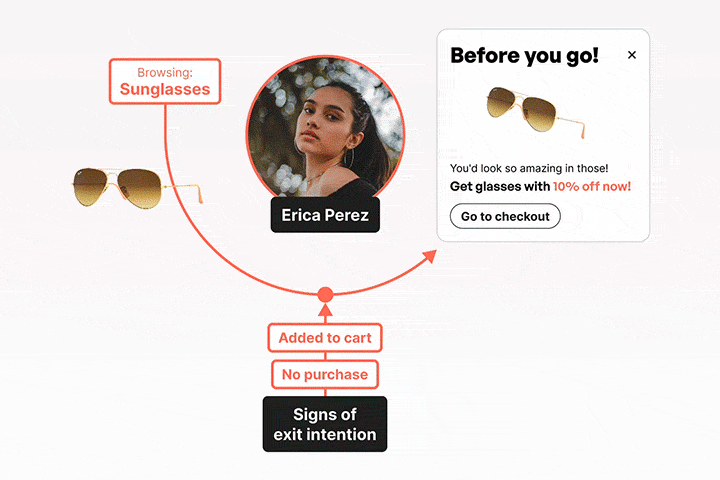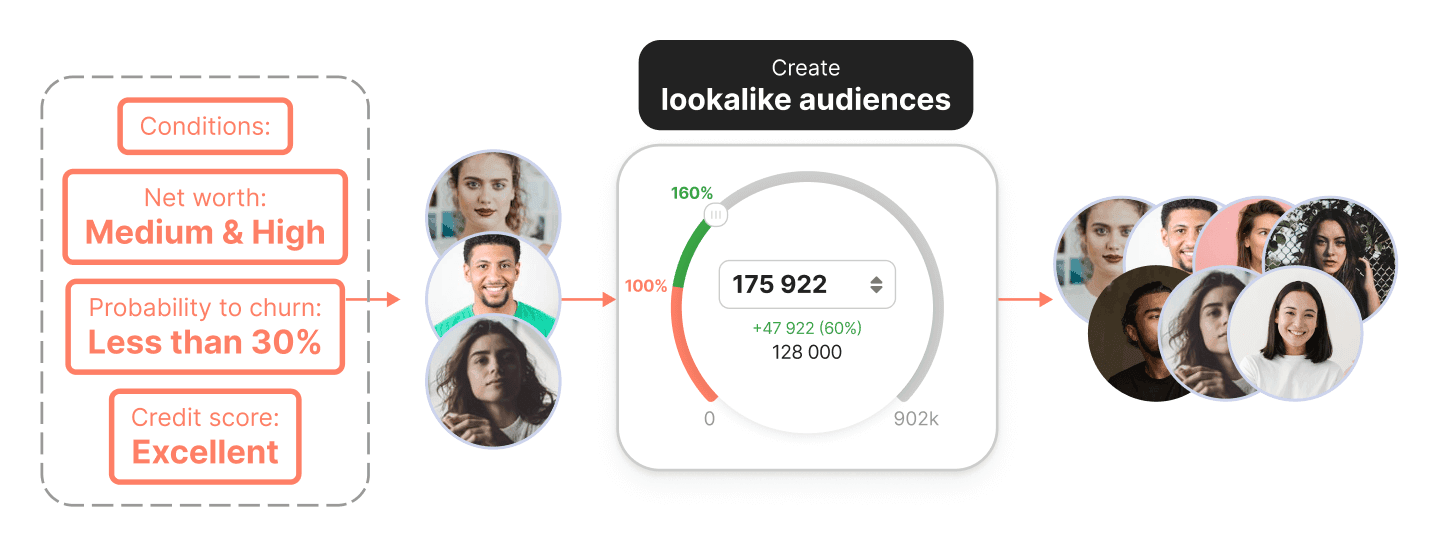How to maximize ROI of a Customer Data Platform through incremental revenue
Businesses strive for efficient marketing and measurable returns, and CDPs unlock revenue by leveraging unified customer data in marketing. This blog explores how a well-implemented CDP can drive significant growth, delivering tangible results across industries.

Director, Consulting & Client Solutions
In the ever-evolving landscape of customer data management, businesses continually seek ways to optimize their marketing efforts and drive measurable returns. When it comes to Customer Data Platforms (CDPs), their true Return on Investment (ROI) lies not just in improving operational efficiency but in their remarkable ability to unlock incremental revenue streams by leveraging the power of unified customer data. In this blog post, we delve into the compelling evidence highlighting how a well-implemented CDP can drive significant revenue growth, delivering tangible results for businesses across various industries.
Incrementality primer
What is incrementality? It is the business results from marketing activities that otherwise would not have happened without that marketing action.
If you stop all your marketing & advertising today, there are still consumers who would purchase or repurchase from you anyway for various reasons: because they have already done their research and made a decision because it is convenient because you are a hugely trusted brand.
Ignoring these consumers for this exercise, the true value of marketing and advertising is in the ability to influence consumer behaviors and drive purchases that would not have occurred organically.
How to achieve incremental sales with CDP
For marketing to achieve incremental sales, essentially, there are only two ways: to Influence and persuade those who would not have bought or to acquire new customers.
How to influence and persuade customers who won’t convert
For this audience, the first group that comes to mind would be prospects at the top of the marketing funnel who did not convert - website visitors who browsed but did not put things into their carts or cart abandoners who did not complete the transactions in the end.
Method #1: Real-time personalisation for abandoned carts, and abandoned browsers
Real-time web/in-app personalization can deliver significant results when it comes to nudging the users who did not convert to complete their purchase. With a CDP in place, automating the activation of abandoned browsers and abandoned basket use cases is easy. The otherwise lost sales can be recovered in 3 simple steps:
- Attributes are defined to characterize customer profiles (e.g., information about personal data, revenue spent and opened campaigns, lifetime value, etc.).
- The audience segment is created on the fly with no coding skills required.
- The segment is then activated via marketing channels such as popup banners, email, or push notifications, using personalized attributes such as the customer’s name, viewed or recommended products, etc.
For our retail & e-commerce clients, the abandoned cart / abandoned browse campaigns that utilized the exact items that the customers have not purchased showed increased conversion by 15% and increased cart value by 23%.

Moreover, beyond upper-funnel prospects, existing customers can actually be a huge opportunity for incremental sales if we are intentional about upselling, cross-selling, and maintaining an excellent CX. Here, a CDP can help in several ways.
Method #2: Smart recommendations for up-selling and cross-selling
Gone are the days when upselling is a simple “Do you want fries with that?” Consumers today have diverse tastes and preferences, and expect extremely relevant recommendations. In Meiro, we believe that product recommendations should take different flavours (or algorithms). For each prospect or client, given sufficient signals, we should be able to recommend based on:
- Complementary products — recommending a case, lens protector or battery pack to a digital camera buyer.
- Collaborative filtering – a fancy way to say that “Customers who have the same products as you tend to like these other products too.”
- Content-based recommendations — “Since you have purchased healthy snacks, here are a few more healthy options for you.”
- Similar customer — “People who are similar to you also purchase…” — the similarity here could be based on demographic, psychographic, or behaviour.
By now we have 3-5 recommendations for a single customer that should be ranked in priority and shown to them one at a time. This ensures that we optimise the opportunity for an existing customer’s discovery of new products and services.

Method #3: Service recovery for existing customers who are not satisfied or who may churn
Here, incremental revenue is all about retaining customers who could be lost without intervention. This is done by detecting early signs of potential churn and performing service recovery. Churn prediction itself is a tough business and requires a huge amount of behavioral signals, which is why it would be challenging to predict churns effectively without a single customer view and a chronological timeline of customer interactions across all channels that a CDP can provide to a business.

Once we can segment a group of customers with a churn probability higher than a threshold acceptable by the organization, a few things should go into service recovery:
- Ads suppression. New ads campaign? Exclude the potential churning group from the campaigns, as otherwise, you would just be wasting the ad budget. The aforementioned Method #2 for up-sell and cross-sell is not applicable here — focus on re-winning the churning customers first.
- Proactive outreach. Provide Customer Service with these potentially churning audiences so that the CS agents gain a full view of customer behavior and interactions to help determine the best way to perform a service recovery for them.
How to acquire new-to-brand customers
Method #4: A better way to create lookalike audiences
For years, marketing practitioners have utilized lookalike audiences in major advertising platforms like Google* and Meta to expand their upper funnel. Until today brands use a method of uploading a custom list of existing customers to the ad platforms in order to generate a lookalike audience, and it is deemed an acceptable strategy.
However, it is important to recognize that the effectiveness of the lookalike audience is contingent upon the quality of the seed audience provided to, say, Meta's Lookalike algorithm. This is where a Customer Data Platform (CDP) can make a difference, providing a higher quality seed audience and consequently improving the resulting lookalike audience.
Through the comprehensive view of customer behavior offered by a CDP, marketers can refine their understanding of the "ideal customer profile" beyond the limited scope of "customers who have purchased recently” or particular demographics also to include:
- Customers who repurchase over time or purchase products with the highest margins.
- Customers in the RFM segment “Champion” or “Promising.”
- Those who are active referrers of your products.
- Those who have engaged actively on the website, app, or email campaigns.
This enhanced perspective allows for precise fine-tuning of the target audience and, consequently, lookalike modeling, increasing the effectiveness of customer acquisition campaigns and driving more meaningful business outcomes.

Conclusion
In assessing any technological investment, a pivotal question remains: “How will this investment help me deliver better business outcomes?” In the case of CDP, its return on investment lies in the capacity to yield incremental business results that would otherwise remain unrealized or fall short of optimal without a consolidated view of cross-channel customer interactions.
Embracing the concept of incrementality and adopting a robust Customer Data Platform becomes not just a strategic and competitive advantage but a crucial driver of sustainable business growth and digital transformation.
*Google has ceased their Similar Audiences as of August 2023.
Table of contents
Incrementality primer How to achieve incremental sales with CDP How to influence and persuade customers who won’t convert Method #1: Real-time personalisation for abandoned carts, and abandoned browsers Method #2: Smart recommendations for up-selling and cross-selling Method #3: Service recovery for existing customers who are not satisfied or who may churn How to acquire new-to-brand customers Method #4: A better way to create lookalike audiences ConclusionUnleash the full potential of your customer data. Let’s talk!
Spread the love:

Quinn takes care of Meiro’s customers by bridging the gap between business, IT, data scientists and implementation team. She also teaches women about all things data as a volunteer with @Shelovesdata.


